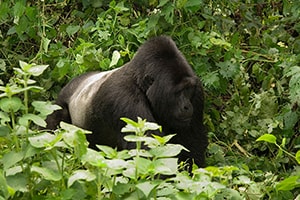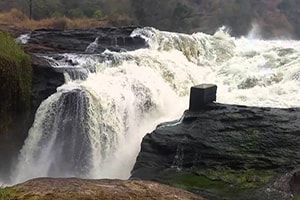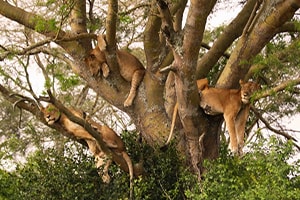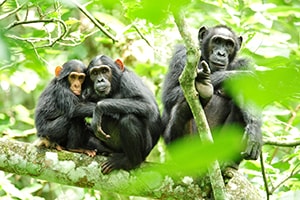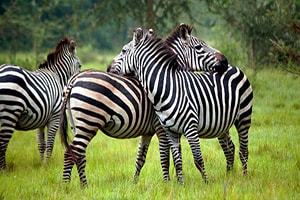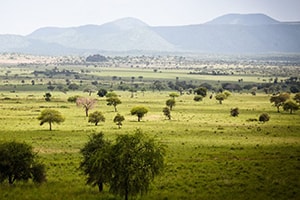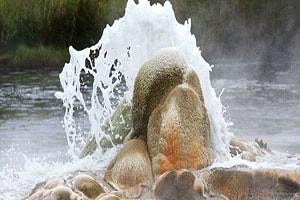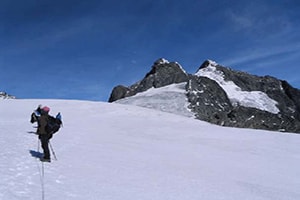Uganda National Parks: List of National Parks in Uganda
There are 10 National Parks in Uganda plus several wildlife reserves and sanctuaries on which the country’s tourism thrives. All combined, Uganda National Parks are the ones that define Uganda Safaris and Tours activities. Several safaris in Uganda take place in these park that are evenly distributed and represented in almost all regions of Uganda. Notable among these parks is Bwindi Impenetrable National Park and Mgahinga National Park which inhabit Uganda’s treasured animals, the ‘Mountain Gorillas in Uganda’. Gorilla Safaris and gorilla tours combined contribute significantly to Uganda Tourism earnings every year.
Other prominent parks include, Queen Elizabeth, Murchison Falls, Lake Mburo, Semuliki and Kidepo National Park where much of the Uganda Safari activities are done throughout the year. Kibale National Park is notable for Chimpanzee Safaris in Uganda, as the park has one of the highest concentrations of chimpanzees in the East African region. Mount Rwenzori National Park and Mount Elgon National Park are notable for climbing and nature activities mainly for adventure tour lovers.
The 10 National Parks of Uganda
Bwindi Impenetrable National Park
Bwindi Impenetrable National Park found in southwestern Uganda is a home to the endangered mountain gorillas in Uganda. Out of about 1000 gorillas in the world, the park has half the number. Gorilla Trekking, nature tours, birding, community walks are among the activities at the park.
Murchison Falls National Park
Murchison Falls National Park is the largest park in Uganda covering 3,893 Sq Kms under the Murchison Conservation Area. The park is comprised of Bugungu & Karuma Wildlife Reserve plus Budongo Forest. Game drive, boat cruise & hiking to the top of the falls are the main activities.
Queen Elizabeth National Park
This is the second largest game park in Uganda occupying 1978 sq Kms. The park that comprise of Kazinga Channel, Ishasha Sector, Mweya Peninsula, Kyambura Gorge, Maramagambo forest & Kasenyi has wildlife safaris, nature walks, chimp trekking and boat cruise as the major tourist activities.
Kibale Forest National Park
The park is found in Kibale district and is a home chimpanzees and a variety of monkey species and birds. Occupying 776 square kilometres, the tourist attractions is a home to 13 primate species. Chimpanzee tracking, birding & nature walks are the major activities.
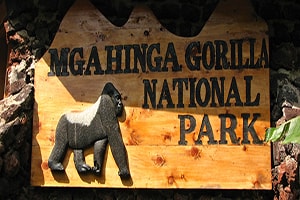
Mgahinga Gorilla National Park
Found in south western Uganda in Kisoro district, Mgahinga National Park is a habitat to the mountain gorillas and Golden Monkeys. Gorilla tracking, nature walks and hiking adventures are the major safari activities at 33 sq kms park.
Lake Mburo National Park
Lake Mburo is the largest of the five lakes which, together with the surrounding wetlands, constitute 20% of the park’s surface of 260 square kilometres. Lake Mburo National Park is a home to many variety of wildlife animals and birds.
Kidepo Valley National Park
Kidepo Valley National Park covers an area of 1,442 square kilometres in the rugged, semi-arid valleys of Karamoja region near South Sudan and Kenya border. The park is known for spectacular views plus a variety of animals and birds.
Semuliki National Park
Semuliki National Park occupies 220 square kilometres. Located about 50 kms from Fort Portal town, Semuliki has got lots of animals and plants. The park’s fascinating attractions include Sempaya Hot Springs, forests, birds and primates.
Rwenzori Mountains National Park
Rwenzori Mountains National Park is the highest mountain range in the whole of Africa. The physical feature has six glacial peaks including Mount Speke, Mount Stanley, Mount Gessi, Mount Emin Pasha, Mount Luigi da Savoia and Mount Baker.
Mount Elgon National Park
The park is found in Eastern Uganda inear Mbale and lies across the Kenyan border covering 1,145 sq kms. Mount Elgon has several water falls like Sipi Falls and Sisiyi falls among others. Hiking and nature walks are the ideal activities.
Conserving National Parks in Uganda
Uganda, often referred to as the “Pearl of Africa,” is renowned for its breathtaking landscapes, diverse wildlife, and rich biodiversity. Its national parks are among the most treasured natural resources, playing a crucial role in preserving the country’s ecological heritage. However, conservation efforts face various challenges, requiring comprehensive strategies to ensure sustainable protection.
Importance of National Parks in Uganda
National parks in Uganda, such as Queen Elizabeth National Park, Bwindi Impenetrable National Park, and Murchison Falls National Park, are vital for preserving biodiversity. These parks provide safe habitats for endangered species, including the mountain gorilla, African elephant, and shoebill stork. Additionally, they contribute significantly to the country’s economy through tourism, which generates foreign exchange and creates employment opportunities for local communities.
Beyond their economic value, these parks play a critical role in maintaining ecological balance. They serve as carbon sinks, regulate water cycles, and protect soil from erosion. Preserving these parks ensures the sustainability of natural resources essential for both wildlife and human populations.
Challenges Facing National Park Conservation
Despite their importance, Uganda’s national parks face numerous conservation challenges:
Poaching and Illegal Wildlife Trade: The poaching of iconic species, such as elephants for ivory and pangolins for scales, threatens biodiversity. The illegal wildlife trade undermines conservation efforts and disrupts ecosystems.
Human-Wildlife Conflict: Communities living near national parks often face challenges such as crop destruction and livestock predation by wildlife. This conflict can lead to retaliatory killings of animals.
Deforestation and Habitat Loss: Encroachment for agriculture, logging, and infrastructure development reduces wildlife habitats. Habitat fragmentation also limits animal migration and breeding.
Climate Change: Rising temperatures and changing rainfall patterns impact ecosystems, altering animal behaviors and reducing water availability.
Inadequate Funding and Resources: Limited financial and technical resources hinder effective conservation programs, such as anti-poaching patrols and community outreach initiatives.
Conservation Strategies and Efforts
To address these challenges, Uganda has implemented various strategies:
- Strengthening Anti-Poaching Measures: The Uganda Wildlife Authority (UWA) has intensified efforts to combat poaching by deploying rangers, using technology such as drones, and collaborating with international organizations.
- Community Involvement: Conservation initiatives increasingly involve local communities through education and benefit-sharing programs. Eco-tourism ventures, such as gorilla trekking, provide financial incentives to communities, fostering positive attitudes toward wildlife protection.
- Restoration of Habitats: Reforestation projects and the creation of wildlife corridors are helping to restore degraded habitats and connect fragmented ecosystems.
- Public Awareness Campaigns: Educating citizens about the importance of conservation encourages support for national park initiatives. Schools, media, and cultural events play key roles in spreading awareness.
- Collaborations and Partnerships: International partnerships with conservation organizations and donor agencies provide much-needed funding and technical expertise to bolster local efforts.
Future of National Parks in Uganda
Sustaining Uganda’s national parks requires continued commitment from all stakeholders, including the government, local communities, and international partners. By prioritizing conservation, Uganda can ensure the survival of its unique wildlife and ecosystems, benefiting future generations while maintaining its position as a premier ecotourism destination.
The preservation of Uganda’s natural heritage is not only an environmental necessity but also a social and economic imperative, promising a sustainable and prosperous future for the nation.

